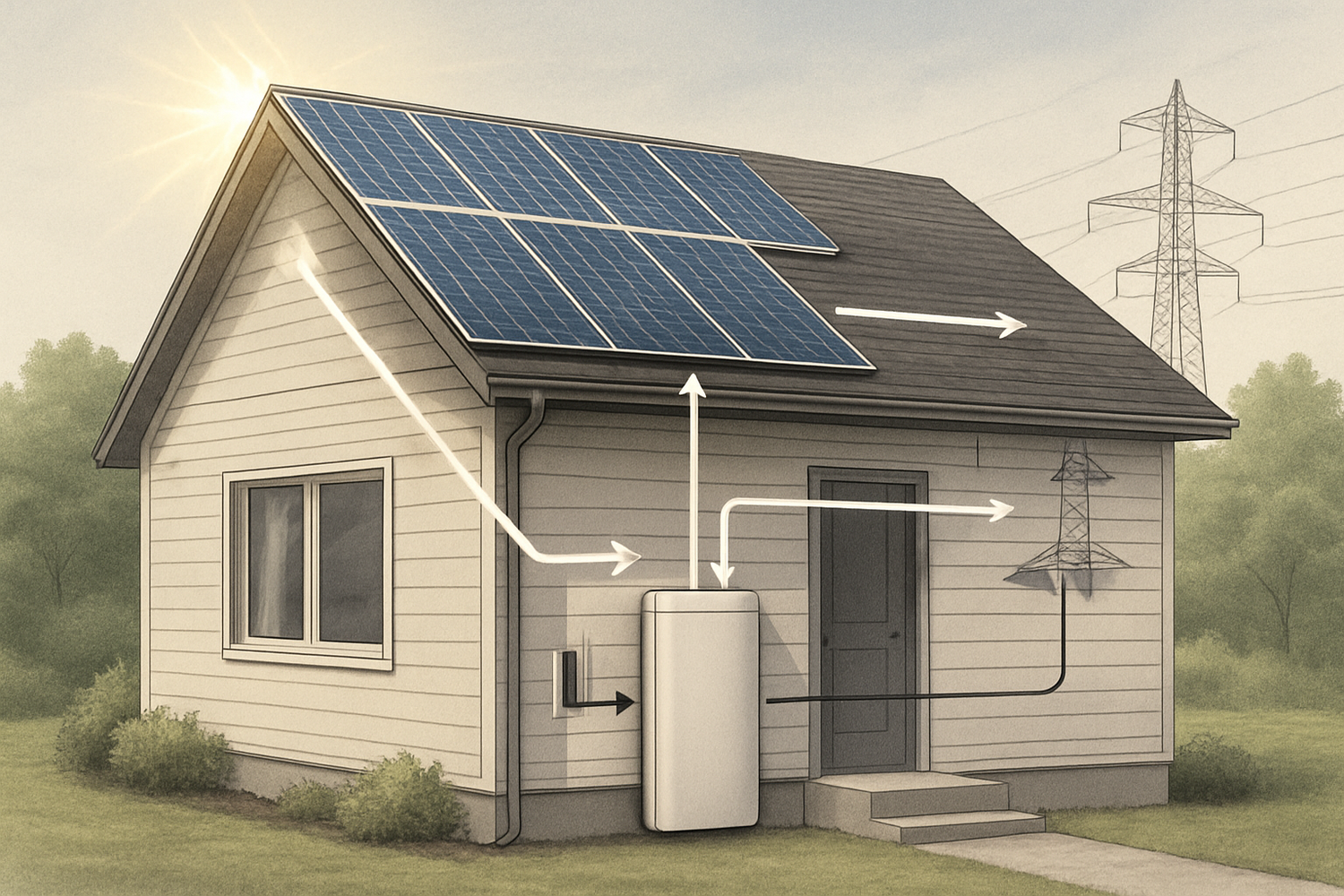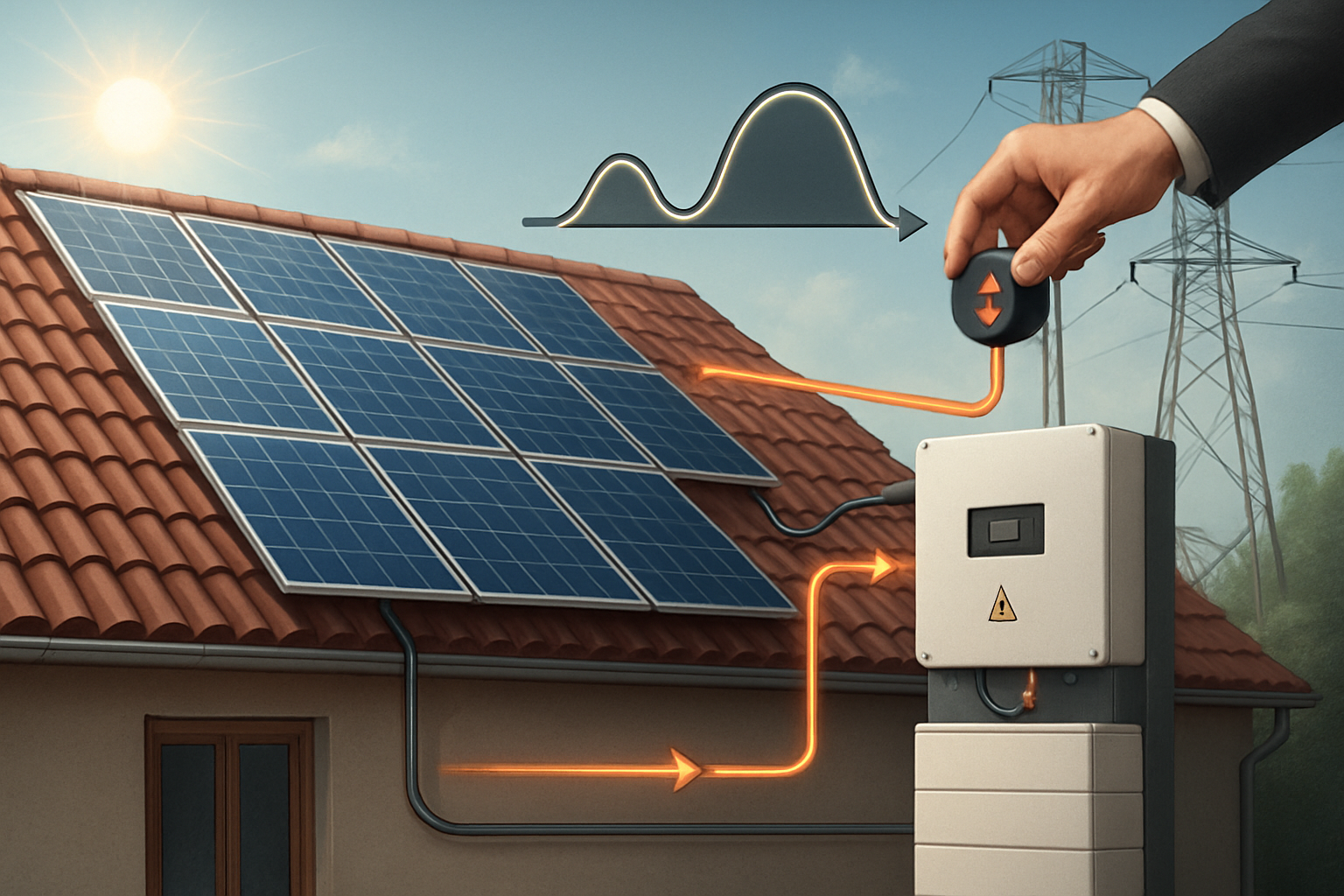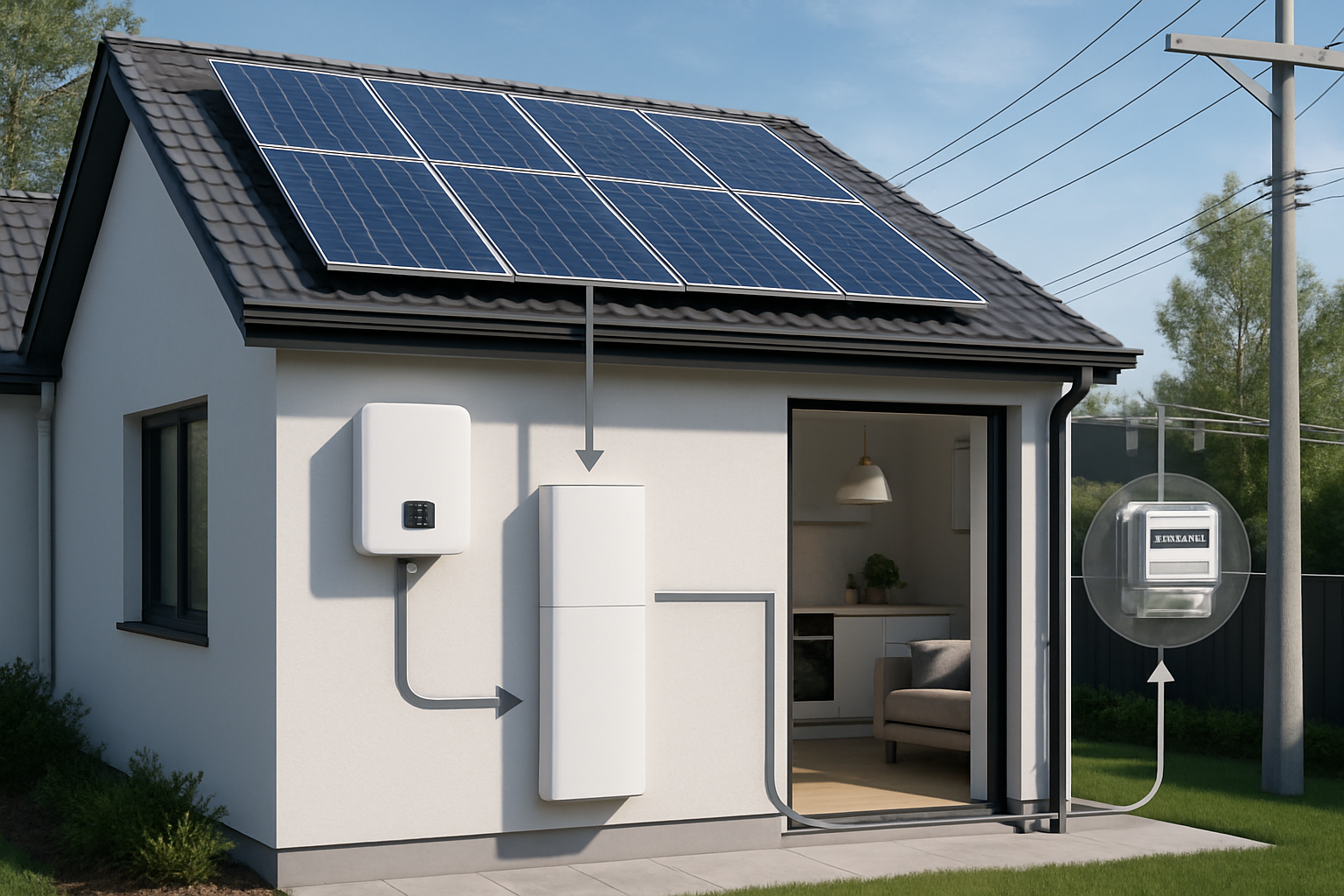As a homeowner with solar panels, you aim to maximize the value of your clean energy. Two key strategies emerge for boosting your solar investment: preventing PV curtailment and engaging in storage arbitrage. Both approaches offer financial benefits, but their impact on your wallet can differ significantly. Understanding these differences helps you make informed decisions about your home energy system.
This article examines PV curtailment and storage arbitrage, comparing their economic implications for homeowners. You will gain clarity on which strategy might offer superior returns based on your specific energy needs and local market conditions.

Understanding PV Curtailment
PV curtailment occurs when your solar panels generate more electricity than the grid or your home can absorb. This leads to a reduction in your system's output, effectively wasting potential energy and revenue. Curtailment can manifest in two primary forms: technical and economic.
What is Solar Curtailment?
Technical curtailment happens due to grid-related issues, such as congestion or voltage control problems. System operators implement it to maintain the security of the electricity supply. Economic curtailment, conversely, occurs when generators reduce output because of price signals. This happens when electricity prices drop too low, sometimes even negative, making it uneconomical to inject power into the grid.
Why Does Curtailment Occur?
Several factors contribute to PV curtailment. High concentrations of solar PV in a local area can overwhelm the grid's capacity, especially during peak generation times. As PV composes increasing shares of grid capacity, it becomes more common for available PV output to go unused for technical or economic reasons. Export limits imposed by utilities also restrict how much excess solar power you can send back to the grid. Without a way to store or use this excess energy, your inverter will automatically reduce your panels' output.
The Cost of Curtailment for Homeowners
For homeowners, curtailment directly translates to lost income or reduced savings. Every watt curtailed is a watt you cannot use, sell, or store. This diminishes the return on your solar investment. PV curtailment is often framed as a loss given that effectively free and clean electricity goes unused. The economic impact becomes more pronounced as solar penetration increases and grid operators face greater challenges in balancing supply and demand.
The Power of Storage Arbitrage
Energy storage arbitrage involves storing electricity when it is cheap and using or selling it when it is more expensive. This strategy capitalizes on fluctuating electricity prices, often driven by time-of-use (TOU) tariffs.
What is Storage Arbitrage?
With a home battery system, you can charge your battery during off-peak hours when electricity rates are low (or when your solar panels are generating excess power). Then, you discharge the battery during peak hours when grid electricity prices are high. This allows you to avoid purchasing expensive electricity from the grid or to sell your stored solar power back at a premium. The economic viability of energy storage systems depends on their operational profile within a specific electricity market and their response to price signals. Energy arbitrage turns your battery storage system into a money-making asset by exploiting daily price swings.
How Homeowners Benefit from Arbitrage
Homeowners primarily benefit from arbitrage through reduced electricity bills. By shifting consumption from peak to off-peak periods, you effectively buy low and use high. If your utility offers favorable feed-in tariffs during peak demand, you might also sell stored solar energy back to the grid for a profit. This strategy maximizes the value of every kilowatt-hour your solar system produces, turning your home into a more active participant in energy management. Using stored solar energy on a TOU tariff can save you more per kilowatt-hour than what you can save with solar on a flat rate.
Factors Influencing Arbitrage Profitability
The profitability of storage arbitrage hinges on several factors. The difference between peak and off-peak electricity prices is crucial; larger price spreads offer greater arbitrage opportunities. The cost of your battery system also plays a significant role. Historically, battery prices have been a challenge for homeowner profitability, with payback times potentially exceeding technical lifetimes for small systems. However, the learning curve for battery storage continues to improve, suggesting more favorable economics in the coming years. Your battery's capacity and efficiency also determine how much energy you can store and retrieve effectively. The value of arbitrage for residential electricity storage can be three times higher than utility-scale storage.
Curtailment Mitigation vs. Arbitrage: A Homeowner's Choice
Deciding between prioritizing curtailment mitigation and storage arbitrage involves weighing direct and indirect financial gains. Often, these strategies complement each other, especially with modern hybrid systems.
Direct Financial Gains: Curtailment Avoidance
Avoiding curtailment directly prevents the loss of generated solar energy. When you store excess solar power instead of letting it be curtailed, you ensure that every watt your panels produce contributes to your energy independence or financial returns. Hybrid systems, combining solar PV with battery storage, are increasingly deployed to enhance grid flexibility and reduce curtailment. By storing power for later use, you reduce your reliance on grid electricity and maximize your self-consumption. Pairing solar PV with a battery can reduce electricity imports from the grid by up to 84% and double PV self-consumption in the building.
Indirect Financial Gains: Arbitrage Opportunities
Storage arbitrage focuses on optimizing the timing of energy use or sale to maximize financial benefit. While it doesn't directly prevent energy loss from curtailment, it leverages stored energy to generate revenue or avoid high costs. This strategy becomes particularly valuable in markets with dynamic pricing or significant time-of-use differentials. The value for storage at high penetrations of PV is significant due to increased balancing requirements, rising solar curtailment, and the system capacity value of storage.
The Role of Hybrid Systems and Batteries
Modern home energy systems, often integrating high-performance lithium iron phosphate (LiFePO4) batteries and solar inverters, offer solutions for both curtailment mitigation and arbitrage. LiFePO4 batteries are a popular choice for solar storage due to their high energy density, long lifespan, safety, and low maintenance. These integrated systems allow you to store excess solar power, preventing curtailment. They also enable intelligent dispatch of stored energy to capitalize on price differences. This dual capability makes them powerful tools for homeowners seeking to maximize their solar investment.
Here is a comparison of the two strategies:
| Feature | PV Curtailment Avoidance | Storage Arbitrage |
|---|---|---|
| Primary Goal | Preventing wasted solar energy | Maximizing financial returns from energy price differences |
| Mechanism | Storing excess solar generation instead of discarding it | Charging when electricity is cheap, discharging when expensive |
| Key Benefit | Maximizes self-consumption, avoids lost generation | Reduces peak utility costs, potentially generates revenue |
| Driver | Grid limitations, oversupply, export limits | Time-of-use tariffs, dynamic pricing, market signals |
| Impact on ROI | Directly increases effective solar generation | Optimizes energy value, improves payback period |
Maximizing Your Solar Investment: Practical Strategies
To truly benefit from your solar and storage system, consider these practical steps.
Sizing Your System for Optimal Returns
Properly sizing your solar array and battery storage is fundamental. An oversized PV system without adequate storage or export capacity will experience more curtailment. Conversely, a battery too small for your solar output or energy needs will limit arbitrage opportunities. Evaluate your average daily energy consumption, peak demand, and typical solar generation patterns to determine the ideal system size. This ensures you capture most of your solar production and have sufficient capacity for arbitrage. The choice of optimal storage size and dynamic electricity tariffs are key to maximize the profitability of PV-battery energy storage systems.
Navigating Tariffs and Incentives
Understanding your local utility's tariff structures is critical. Many utilities offer time-of-use (TOU) rates, where electricity prices vary throughout the day. These tariffs create the perfect environment for storage arbitrage. Some regions also provide incentives for installing battery storage, further enhancing the economic viability of these systems. Researching these programs helps you unlock additional savings and revenue streams. Most solar battery installations will earn a federal tax credit, and utilities and states are opening more battery programs, including rebates and virtual power plant programs.
Your Path to Energy Independence
Choosing between PV curtailment avoidance and storage arbitrage is not always an either/or proposition. Often, the most effective strategy involves a combination of both, enabled by sophisticated home energy storage systems. By understanding the nuances of each approach, you can tailor your system to your specific goals, whether that means maximizing every watt generated, capitalizing on market fluctuations, or achieving greater energy independence.
Investing in reliable, scalable energy solutions empowers you to take control of your home's power. With the right information, you can optimize your solar investment and contribute to a more sustainable energy future.
Disclaimer: This article provides general information and does not constitute financial or legal advice. Consult with a qualified professional for personalized recommendations.
Frequently Asked Questions
What is the main difference between PV curtailment and storage arbitrage?
PV curtailment is the reduction of solar panel output due to grid limitations or oversupply, leading to wasted energy. Storage arbitrage is the practice of storing electricity when it's cheap and using or selling it when it's expensive, leveraging price differences for financial gain.
Can a home battery system help with both curtailment and arbitrage?
Yes, absolutely. A home battery system, especially when integrated with a hybrid inverter, can store excess solar energy that would otherwise be curtailed. This stored energy can then be used later to power your home or sold back to the grid during peak price periods, effectively performing arbitrage.
Are time-of-use (TOU) tariffs important for storage arbitrage?
Yes, TOU tariffs are crucial for maximizing arbitrage benefits. These tariffs create significant price differences between off-peak and peak electricity rates, allowing homeowners to save money by discharging their batteries when grid power is most expensive, or even generate revenue by selling stored energy back to the grid at higher rates.
Is investing in a battery always profitable for arbitrage?
The profitability of a battery system for arbitrage depends on several factors, including the initial cost of the battery, the local electricity price differentials (especially TOU rates), and the battery's lifespan. While battery costs have historically been a barrier, ongoing advancements are making them more economically viable. It is important to conduct a thorough cost-benefit analysis for your specific situation. The economic viability of energy storage systems depends on their operational profile within a specific electricity market and their response to price signals.





Leave a comment
All comments are moderated before being published.
This site is protected by hCaptcha and the hCaptcha Privacy Policy and Terms of Service apply.